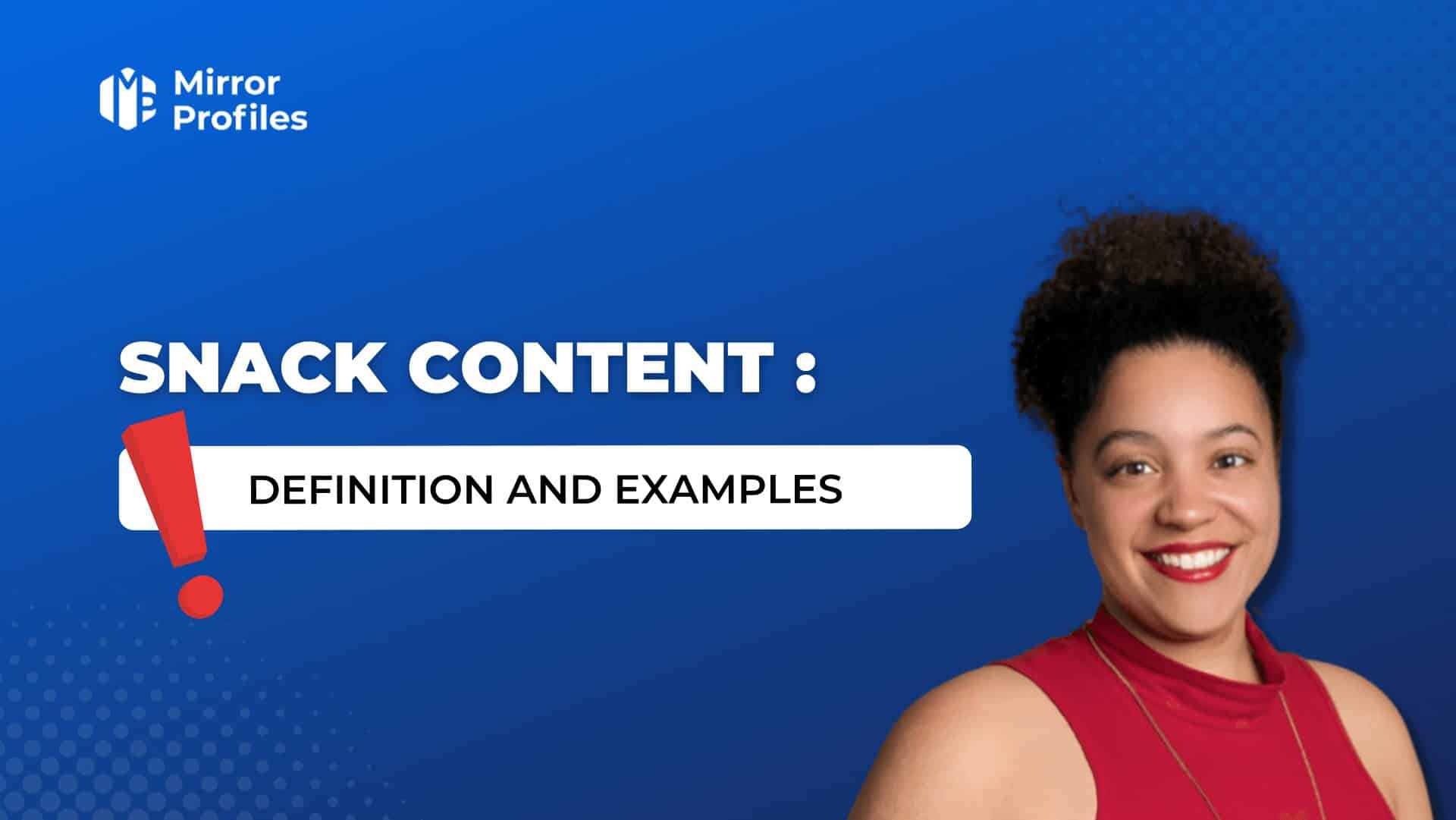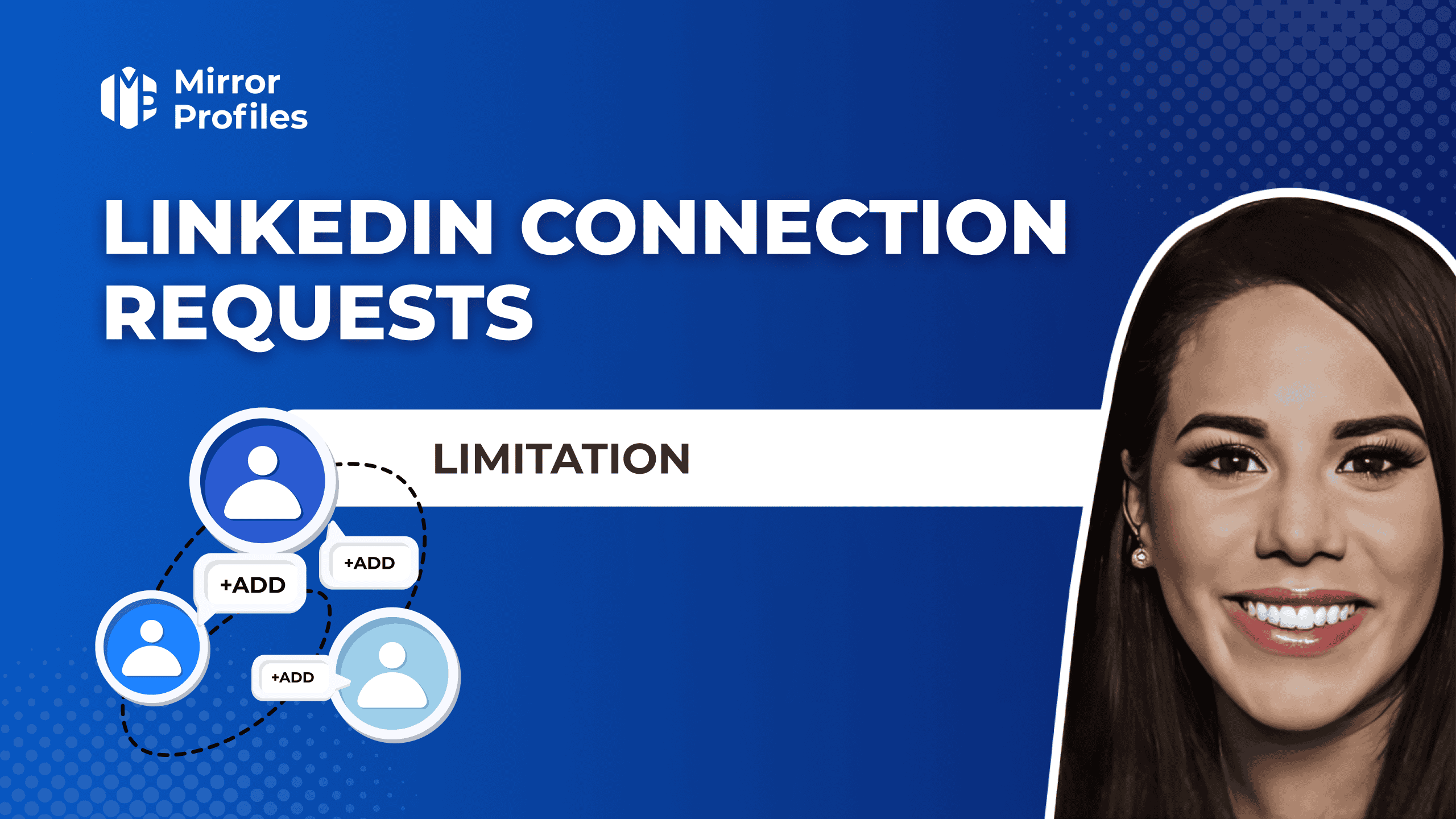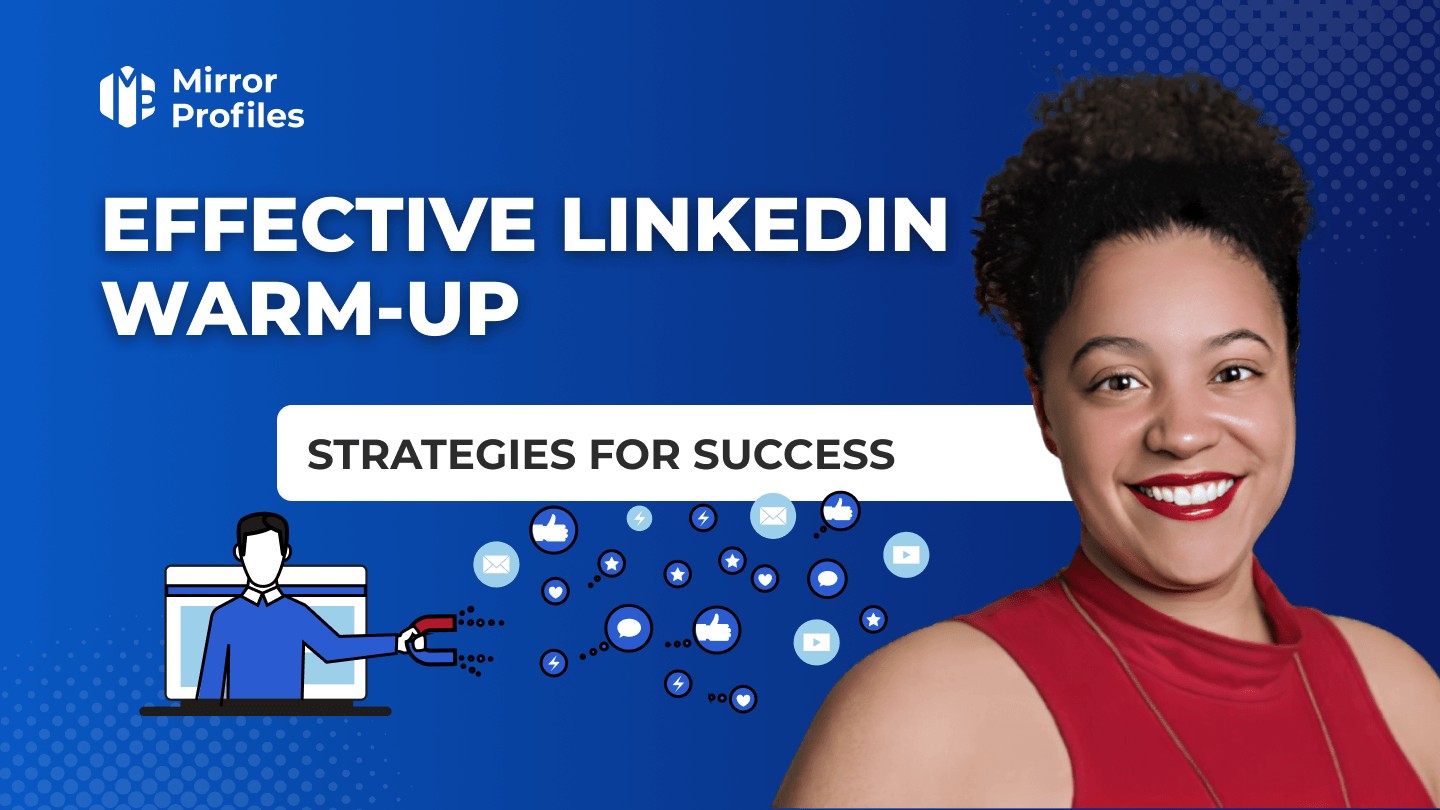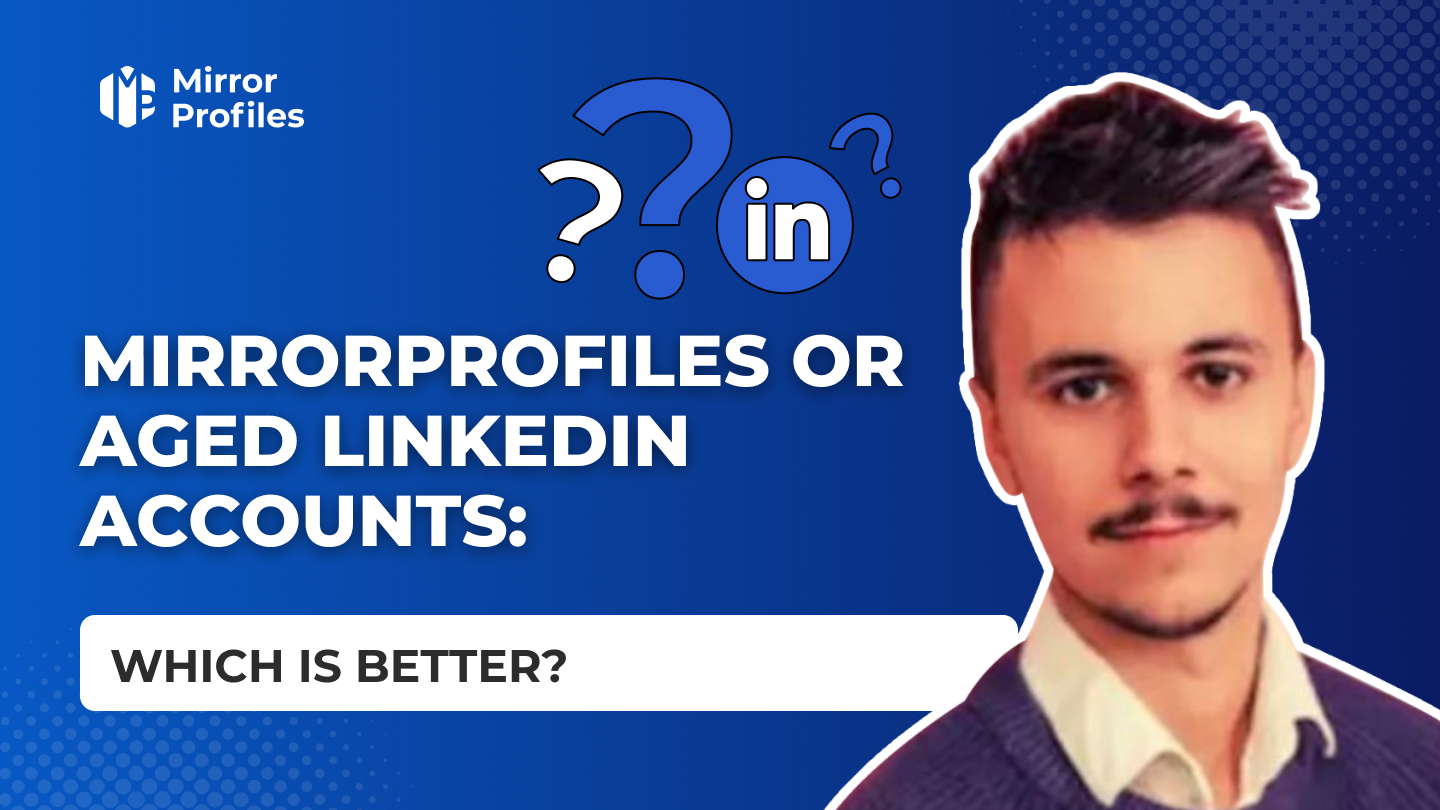Snack content is brief, captivating media perfectly adapted to social networks. Its aim? To catch users’ eyes instantly, encourage followers to share posts enthusiastically, elicit an enthusiastic reaction, and boost interaction through effective marketing strategies.
At the other end of the spectrum, we find slow content: long, detailed content, often found on blogs, websites or certain social networks, focusing on information, data, and reflection.
In this article, we’ll detail what snack content is, understand its appeal, present examples of snack content you can explore online, explain how to integrate it effectively into your content strategy, and discuss its role in the future of global digital marketing and advertising.
You’ll see how snack content can be a powerful lever for improving your brand presence on LinkedIn, engaging your audience, and building community loyalty (even in B2B).
Definition of snack content
Snack content, also known as micro-content, is a brief content format specially designed for rapid consumption on social media. Its aim is to grab users’ attention in an instant, encouraging followers to share posts, elicit a positive reaction, and stimulate participation from followers.
Unlike slow content, which is characterized by long, detailed content available on blogs, websites or certain social networks, snack content favors concise posts and impact.
Origins and concept
The concept of snack content was widely disseminated by Fast Company magazine in 2013, describing it as “content as quickly consumable as a packet of potato chips”.This approach is based on the observation that Internet users’ attention spans are shrinking, prompting them to prefer short but striking content, offering instant information.
This type of content meets a growing demand for fast entertainment, such as TikTok videos, curiosity, and exchange on the web.
Key features
The distinctive elements of snack content include :
- Short: consisting of short texts, images or videos not exceeding one minute.
- Visual: using bright colors, animations and sound effects to attract attention.
- Striking: it arouses emotion, surprise or admiration.
- Easy to use: it’s immediately understandable, with no need for in-depth reading or prior downloading.
- Easy to share: equipped with sharing features such as dedicated buttons, direct links and hashtags.
Snack content comes in a variety of formats, including :
- Infographics
- Short videos (like those on TikTok or Reels)
- Tweets
- Quotes
- Memes or gifs
- Photos
Why is snack content so appealing?
Snack content, adapted to the new habits of Internet users, offers invaluable advantages to brands and content creators wishing to stand out from the crowd, build a global audience, and foster community loyalty.
Compatibility with user behavior
With a constant flow of information on the web, web users prefer short, visual, and engaging content, easily consumable on mobile.Snack content, characterized by its brevity and visual impact, perfectly meets these requirements. It attracts attention quickly, conveys a precise message, and encourages interaction. Ideal for social networks, it enables users to be informed efficiently while offering them the possibility of further research. Offering snack content in B2B is therefore totally relevant, since it uses the same codes as outbound prospecting on Linkedin: short, effective posts that encourage sharing and arouse curiosity to go further.
Benefits for brands and content creators
Snack content is proving to be a powerful lever for brands and content creators wishing to stand out in their advertising efforts and strengthen their presence.
It contributes to :
- Increase visibility and audience on social networks, thanks to its viral potential and ease of sharing.
- Stimulate audience engagement and loyalty, by provoking emotions and interaction.
- Reflect the identity and uniqueness of the brand or designer, with their own tone, style and format.
- Build a close relationship with web users, by offering them useful, entertaining or inspiring content that meets their expectations.
In short, snack content is an effective strategic tool for captivating people and building loyalty, as long as it offers quality, original content that is adapted to the platform and target audience, and forms part of a coherent content strategy.
Concrete examples of snack content
Snack content comes in a variety of formats, each with its own characteristics and advantages. Here are some of the snack content available on the web and across global media, which could inspire you to create your own content.
Posts on social networks
Social network posts are the ideal format for snack content. They offer the opportunity to share concise, visual, and interactive messages, capable of reaching a wide audience of followers and redirecting traffic to your website or blog.
For your publications on the networks, you can opt for texts, images, videos, polls or stories.
It’s crucial to adapt to the specifics and expectations of each platform, while targeting your content according to your audience and objectives.
Here are a few ideas for publications that perfectly embody snack content:
- A Facebook post that presents a product or service in a playful and humorous way, like the one proposed by the Innocent brand.
- An Instagram post that shares an inspirational quote or practical tip, like this one from HubSpot.
- A tweet that sums up a news item or trend, exemplified by Netflix.
- A LinkedIn update that highlights an expertise or testimonial, as Semrush does.
Short videos
Short videos are an excellent way of capturing attention and arousing emotion. They convey a precise, memorable message while taking advantage of visual and audio resources to engage followers. These videos can be published on social networks or dedicated platforms such as TikTok, Reels, YouTube Shorts, etc.
These offer unique features (filters, effects, stickers, etc.) that can enhance your videos and make them more engaging. Examples of short videos illustrating snack content:
- A TikTok video revealing a tip or recipe, like the one by Tasty.
- A Reel with a demonstration or tutorial, like Sephora’s.
- A YouTube Short telling a story or anecdote, proposed by TEDx.
- A Snapchat video sharing an experience or opinion, like Nike.
Infographics and captivating images
Infographics and captivating images are very popular for summarizing and illustrating complex information in an accessible way.
They make data immediately understandable through attractive graphic elements.
You can share them on social networks or on your website to enrich your articles or pages.
Examples of infographics and captivating images representing snack content:
- An infographic displaying statistics or key data, like this one from Canva.
- An image that sums up a concept or idea, like Buffer.
- A visual comparison of products or services, offered by Shopify.
- A product or service staging, illustrated by Airbnb.
Memes and GIFs
Memes and GIFs are extremely popular for generating entertainment and humor.
They play with cultural codes and provoke laughter and smiles, while being easy to share on social networks and specialized platforms like Giphy or Imgur.
Here are some ideas for memes and GIFs that demonstrate the effectiveness of snack content:
- A meme parodying an advert or celebrity, like the Durex meme.
- A GIF expressing an emotion or reaction, such as the one from Coca-Cola.
- A meme referring to an event or news item, like Spotify.
- A GIF illustrating a product or service, offered by Slack.
How can you integrate snack content into your content strategy?
Snack content, known for its ability to quickly capture attention thanks to its short, engaging format, plays a crucial role in strengthening your content and marketing strategy. It offers a dynamic and easy way to interact with various segments of your audience. Here are some effective strategies for incorporating snack content into your content approach:
Identify suitable platforms
Snack content is not suitable for all platforms.
Select the ones that best match your target audience, your objectives and the type of content you produce.
Snack content is not suitable for all platforms. Select the ones that best match your target audience, your objectives, and the type of content you produce, such as LinkedIn, TikTok, or other global social media platforms.
It’s crucial to respect the conventions, policies, and peculiarities of each platform, avoiding publishing the same content everywhere. Adapt your content to each channel, taking into account length, format, tone, and style.
Create engaging, easy-to-consume content
To capture attention, snack content needs to be brief, visual, impactful, and easy to digest. It must also be original, creative, and personalized to stand out in your marketing efforts and reinforce your brand image.
To create captivating, easy-to-consume content, be inspired by successful ideas, or use online creation tools such as Canva, Lumen5, Giphy and others. Don’t hesitate to enlist the help of content professionals, such as copywriters, graphic designers, and videographers, who can guide you in the creation of effective snack content for media platforms.
Measure and adjust to optimize impact
Snack content needs to be integrated into a broader content strategy, targeting defined objectives such as increasing brand awareness, generating traffic, converting prospects, or building customer loyalty through effective marketing and advertising efforts.
Measuring the impact of your snack content is essential, using data-driven performance indicators such as the number of views, likes, comments, shares, clicks, and so on. Also analyze your audience’s feedback to continually adjust and improve the quality, relevance, frequency, and diversity of your content.
The place of snack content in the future of digital marketing
Snack content, a content format that is carving out a place for itself in current and future digital marketing, is perfectly suited to the needs of increasingly connected, mobile, and demanding people. Our customers often use snack content on our LinkedIn MirrorProfiles accounts to enhance their global prospecting campaigns.
After all, a prospect who has seen one of your pieces of content is three times more likely to respond, even if the content in question was brief and did not require much time, just as our clients Paulo and Vitor have observed.
This format offers brands and content creators a great opportunity to stand out and build audience loyalty, while requiring constant innovation to adapt to new platforms, technologies, and user behaviors.
Evolving content consumption trends
Content consumption is evolving under the influence of several factors:
- The increase in the number of users and social networking platforms, leading to greater competition and information saturation.
- The reduction in user attention spans, from 12 seconds in 2000 to 7 seconds in 2024.
- A marked preference for visual content, considered more attractive, memorable and sharable than text-based content.
- The growing popularity of interactive formats such as stories, live and polls, which strengthen the connection and engagement with the audience.
- The emergence of new technologies such as virtual reality, augmented reality and artificial intelligence, offering new avenues for content creation and distribution.
These trends are encouraging the development of snack content, a short, visual, punchy, and interactive format, perfectly in tune with user expectations and global media consumption habits.
The importance of continuous innovation
Snack content, far from being a fixed format, must evolve with digital marketing.
For brands and content creators, continuous innovation is crucial to keep pace with trends and technologies.
Continuous innovation requires :
- Constantly monitor the evolution of platforms, formats, audiences and competitors to draw inspiration and create innovative content.
- Test new formats, ideas and approaches with audiences to assess their effectiveness and potential.
- Optimize existing content by improving, recycling or reusing it to enhance its performance and sustainability.
- Get trained and supported by resources, tools and experts who can help you innovate and excel in content creation.
Continuous innovation is therefore crucial to the success of snack content, which must be constantly renewed and improved to meet user expectations and stand out from the global competition.
In conclusion, snack content – short, digestible content – excels on social networks and digital marketing platforms. It effectively captures users’ attention, arouses their emotions, and stimulates interaction. This form of content offers brands and creators the opportunity to stand out from the crowd, share their message widely, and strengthen audience loyalty.
However, it requires constant innovation to keep pace with changes in platforms, technologies, policies, and user behavior.
To successfully integrate snack content into your content strategy, identify the most relevant platforms, create captivating, easy-to-consume content, and don’t forget to measure your results to refine your approach. Take inspiration from the ideas presented above, or explore online tools designed to make snack content creation easier, and share the best practices within your community.
LinkedIn has a special place for B2B snack content, as this type of content is not yet very present on this global network, and is tending towards this new method of consuming information, even in the professional world. Experts like Paulo and Vitor have started leveraging LinkedIn to share their services and build a strong professional community.
FAQ
What is good content for LinkedIn ?
Good LinkedIn content in 2025 is authentic, insightful, and engaging: share thought leadership, personal stories, and practical how-tos; use clear formatting, visuals, and up to three targeted hashtags; encourage interaction by asking questions; post consistently; focus on native, not external, content; and tag relevant people—all to boost reach and trust.
What is snack content ?
Snack content is brief, visually engaging content designed for rapid consumption on social media, typically lasting under one minute. It aims to immediately capture attention, evoke emotions, and encourage sharing or interaction. Formats include short videos, memes, infographics, and quotes, catering to shrinking attention spans for quick, impactful messages.
What is a good content strategy for LinkedIn ?
A strong LinkedIn content strategy mixes thought leadership, industry insights, how-to guides, videos, and interactive polls to engage your audience . Post consistently, prioritize authenticity and storytelling, and check analytics to refine your approach . Balance educational, inspirational, and promotional content—avoid being overly salesy—and engage with others’ posts to boost visibility.
How to generate content on LinkedIn ?
To generate content on LinkedIn, identify key subjects, prepare basic equipment for video recording, and schedule interviews with experts. Use tools like Riverside or Zoom for recording. Mix content types such as educational posts, thought leadership, and personal stories. Balance organic reach with lead generation content.





